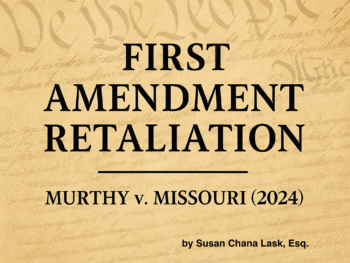Angela Renga, respondent, v Gregory Renga, appellant. (Index No. 200809/09)
2010-02664
SUPREME COURT OF NEW YORK, APPELLATE DIVISION, SECOND DEPARTMENT
2011 NY Slip Op 6097; 2011 N.Y. App. Div. LEXIS 5975
July 26, 2011, Decided
NOTICE:
THE LEXIS PAGINATION OF THIS DOCUMENT IS SUBJECT TO CHANGE PENDING RELEASE OF THE FINAL PUBLISHED VERSION. THIS OPINION IS UNCORRECTED AND SUBJECT TO REVISION BEFORE PUBLICATION IN THE OFFICIAL REPORTS.
COUNSEL: [**1] Franklin, Gringer & Cohen, P.C., Garden City, N.Y. (Steven E. Cohen and Jesse Grasty of counsel), for appellant.
Susan Chana Lask, New York, N.Y., for respondent.
JUDGES: MARK C. DILLON, J.P., ARIEL E. BELEN, SANDRA L. SGROI, ROBERT J. MILLER, JJ. DILLON, J.P., BELEN, SGROI and MILLER, JJ., concur.
OPINION
DECISION & ORDER
In an action for a divorce and ancillary relief, the defendant appeals, as limited by his brief, from so much of an order of the Supreme Court, Nassau County (Falanga, J.), dated December 22, 2009, as, upon reargument, adhered to its original determination in an order of the same court dated September 1, 2009, granting that branch of the plaintiff’s motion which was, in effect, for a determination that the unallocated settlement proceeds of an action to recover damages for medical malpractice received by the parties during their marriage was the parties’ separate property.
ORDERED that the order dated December 22, 2009, is reversed insofar as appealed from, on the law, with costs, upon reargument, so much of the order dated September 1, 2009, as granted that branch of the plaintiff’s motion which was, in effect, for a determination that the unallocated settlement proceeds of an action [**2] to recover damages for medical malpractice received by the parties during their marriage was the parties’ separate property is vacated, that branch of the plaintiff’s motion is denied, and the matter is remitted to the Supreme Court, Nassau County, for a determination in accordance herewith, as to whether the subject settlement proceeds are marital property or separate property.
In 1996, during the parties’ marriage, the plaintiff, with the defendant suing derivatively, commenced an action to recover damages for medical malpractice. In 2003, the action was settled, and the parties received an unallocated net settlement in the principal sum of $4.8 million, which was made payable to both parties. The parties deposited the net settlement proceeds into a joint investment account and, in April 2007, allegedly for estate planning purposes, they withdrew a majority of the balance, which they deposited in two relatively equal amounts, into two separate trust accounts, one for the defendant and one for the plaintiff.
In March 2009, the plaintiff commenced the instant action for a divorce and ancillary relief, and in July 2009, she moved, inter alia, for a determination that the net settlement [**3] proceeds were the parties’ separate property and for a hearing to determine the allocation between herself and the defendant of those proceeds. The defendant opposed the motion, arguing that the settlement proceeds had long ago been converted into marital property because the settlement check had been made payable to both parties, the funds had been deposited into a joint investment account, and, in [*2] April 2007, the parties had used a portion of the proceeds to fund, in approximately equal amounts, separate trust accounts for each of them. In an order dated September 1, 2009, the Supreme Court determined, in effect, and in pertinent part, that the net settlement proceeds were separate property and that the allocation between the parties would be determined at trial. The Supreme Court further determined that the deposit of the unallocated net settlement proceeds into a joint investment account did not convert those funds into marital property, but that the interest earned thereon may be marital property.
The defendant thereafter moved for leave to reargue, contending that the net settlement proceeds had been presumptively transmuted into marital property subject to equitable distribution, [**4] and that the plaintiff could not rebut this presumption. In effect, the defendant sought a determination that, as a matter of law, the settlement proceeds were marital property subject to equitable distribution. In the order appealed from the Supreme Court, inter alia, granted leave to reargue, and adhered to its original determination.
Generally, the proceeds from an action to recover damages for personal injuries are considered separate property of the spouse receiving the compensation (see Domestic Relations Law § 236[B][1][d][2]; Crescimanno v Crescimanno, 33 AD3d 649, 822 N.Y.S.2d 310). However, the deposit of separate property into a joint bank account gives rise to a presumption that each party is entitled to a share of the property (see Banking Law § 675[b]; Chamberlain v Chamberlain, 24 AD3d 589, 593, 808 N.Y.S.2d 352; Garner v Garner, 307 AD2d 510, 512, 761 N.Y.S.2d 414). This presumption may be rebutted with clear and convincing evidence that “the account was titled jointly as a matter of convenience, without the intention of creating a beneficial interest, and that the funds in the account originated solely in the separate property of the spouse who claims the separate interest” (Chamberlain v Chamberlain, 24 AD3d at 593; see [**5] Crescimanno v Crescimanno, 33 AD3d 649, 822 N.Y.S.2d 310; Wade v Steinfeld, 15 AD3d 390, 391, 790 N.Y.S.2d 64).
Here, contrary to the Supreme Court’s determination, the parties’ deposit of the unallocated net settlement proceeds into a joint investment account gave rise to a presumption that the proceeds were transmuted into marital property (see Banking Law § 675[b]; Crescimanno v Crescimanno, 33 AD3d at 650; Chamberlain v Chamberlain, 24 AD3d at 593). The record on appeal is insufficient to render a determination as to whether the plaintiff can rebut this presumption. We therefore remit the matter to the Supreme Court, Nassau County, for determination of this issue upon the trial of this action.
We decline the plaintiff’s request for the imposition of sanctions against the defendant in connection with this appeal (see 22 NYCRR 130-1.1).
DILLON, J.P., BELEN, SGROI and MILLER, JJ., concur.









